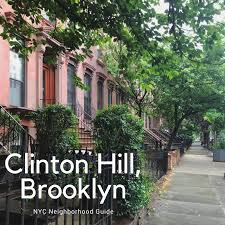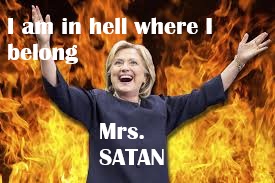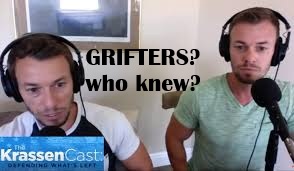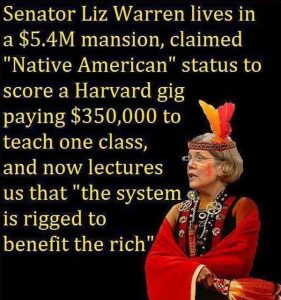
Zohran Mamdani’s upset win as New York City’s youngest mayor in over a century, snagging the gig at 34 with his democratic socialist swagger, drops like a Molotov cocktail into Brooklyn’s beating heart. The folks therein voted for him, so they’ll deserve what they get, good, bad or otherwise.
Clinton Hill, that postcard-pretty pocket of brownstones and boomboxes wedged between Fort Greene’s grit and Pratt Institute’s polish, is ground zero for the fallout. This neighborhood’s been a gentrification poster child since the ’80s: once a Black middle-class haven of integrated brownstones and affordable rents, it’s now a $1.4 million median-home-price playground for tech bros and artists who discovered “vintage” after their first Roth IRA. Like the kid from Shriner’s Hospital says, “Thank you for giving!”
Mamdani’s affordability crusade could either hit the brakes on this luxury train or derail it into chaos. I’m betting on chaos.
Buckle up—here’s the unvarnished forecast.
First, the good(ish) news for the displaced: Mamdani’s housing playbook is a love letter to the renters getting steamrolled. He’s vowing an immediate rent freeze on stabilized units—channeling de Blasio’s old tricks from 2015 and 2020—to slam the door on hikes that have evicted families faster than a bad Tinder date.
In Clinton Hill, where Section 8 vouchers were once a lifeline but now barely cover a studio, this could buy breathing room for the holdouts. Picture an elderly auntie in her rent-controlled walk-up on Vanderbilt Avenue not being shocked by a $2,000 jump because some developer sniffed “potential.”
The Clinton Hill hipsters love to lay claim to their wokeness, but even so, they don’t like living near the people of color — well — they’re in for a rude awakening. This is why, when using Brooklyn as a Mamdani destructo-gauge, we chose Clinton Hill. It’s very typical of what it is, and being typical will probably prove very bad for its existence.
Mayor Mao is gunning to build 200,000 permanently affordable units citywide over a decade, doubling public housing bucks, and repurposing vacant eyesores like the long-shuttered 1024 Fulton Street site into mixed-income havens with senior centers and community spaces.
For Clinton Hill’s fading Black and Latino core—down 6% since 2000—this means fewer “accidental” evictions via deed theft and harassment from landlords chasing white-collar wallets.
But here’s the rub: Mamdani’s not stopping at mercy rules. His tax overhaul is a gut punch to the gentrifiers who turned Clinton Hill into Brooklyn’s “Gold Coast.” He wants to rejigger property assessments—lowering them across the board but hiking rates in “richer and whiter” enclaves like those prissy brownstone blocks off Clinton Avenue. Translation: Your artisanal-coffee-sipping neighbor in a $5 million stucco flip pays more to subsidize Jamaica or Brownsville, easing the load on working-class pockets.
Sounds equitable? Sure, until the lawsuits fly and the Manhattan expats bolt, whispering about “race-based taxation” while packing U-Hauls.
Real estate honchos are already sweating. No corporate exodus yet, but Clinton Hill’s median sale prices could dip 20-25% if the vibe sours, per early whispers from REITs. Developers might pause those glossy townhouse cranes, starving the pipeline of “mixed” projects that sneak in a token affordable unit amid the luxury condos.
In Clinton Hill, where white influx has ballooned alongside white flight from Bed-Stuy, this could freeze the gears. That might be good for legacy residents, bad for young families priced out of the “affordable” mirage.
Gentrification’s pace slows, but at what cost? Fewer hip cafes on Myrtle? A brain drain of creative types who fuel the scene? And with Trump glowering from D.C., threatening federal funding cuts, Mamdani’s $9 billion revenue grab via wealthy/corporate tax hikes might fizzle in Albany, leaving Clinton Hill’s safety net threadbare.
Bottom line: Mamdani’s reign could reclaim Clinton Hill for its soul—halting the exodus of Black families, stabilizing rents, and taxing the invaders to foot the bill. Or it backfires into stagnation, where “affordable” becomes code for “stuck,” and the neighborhood ossifies into a museum of what Brooklyn used to be. Either way, expect fireworks: more tenant unions like the Pratt Area crew, fiercer NIMBY battles over Fulton Street builds, and a cultural pivot from artisan bakeries to community gardens.
For the 12-year-old survivors of yesteryear’s displacements, it’s a shot at redemption. For the rest? Pray your brownstone’s not the next “whiter” target. Clinton Hill won’t look the same by 2029—question is, will it feel like home again?





